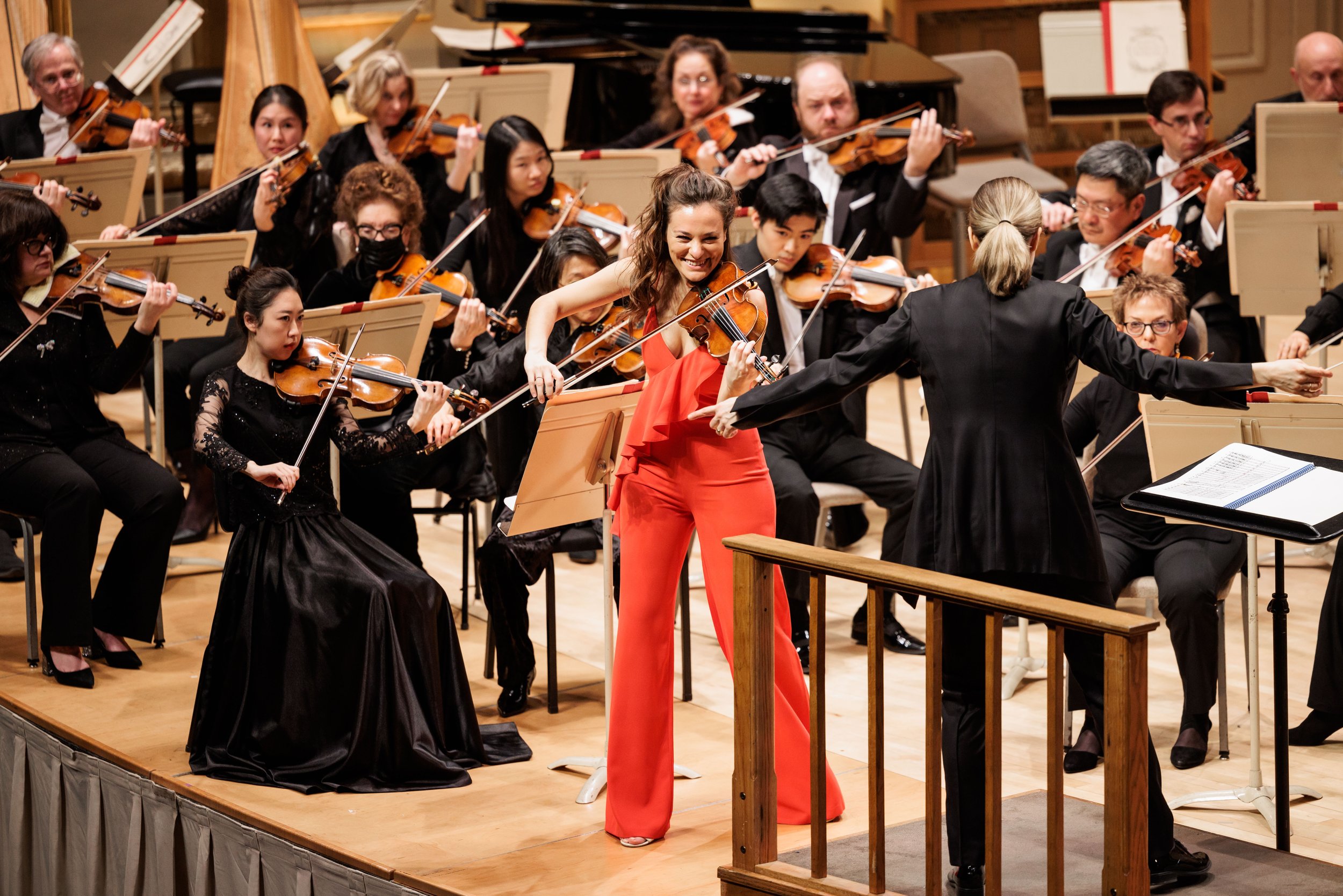Praise from The Boston Globe for Nicola Benedetti’s Boston Symphony debut
Nicola Benedetti makes Boston Symphony Orchestra debut on Szymanowski Violin Concerto No. 2 with Karina Canellakis (Photo credit: Aram Bohosian)
Guest conductor Karina Canellakis weaves clarity, control, and balance at the BSO
By A.Z. Madonna
The Boston Globe
January 20, 2023
This week’s program at the Boston Symphony Orchestra featured fewer locally known quantities than usual. It was the Symphony Hall subscription series debut of American conductor Karina Canellakis, a veteran of the Tanglewood Music Center and the first woman to become chief conductor of the Netherlands’ Radio Philharmonic Orchestra. It was the BSO debut altogether of violinist Nicola Benedetti, the first woman and first Scot to direct the Edinburgh International Festival since its 1947 founding. And the repertoire, all Central European, was chestnut-free; a Dvořák deep cut to start things off, and two 20th-century Polish concertos: Szymanowski’s Violin Concerto No. 2, and Lutosławski’s Concerto for Orchestra. That might partially explain why attendance at Thursday evening’s performance was sparser than it could have been; the slushy weather probably didn‘t help either.
Canellakis began the concert by leading the first BSO performances in more than a century of Dvořák’s “Wood Dove (Holoubek),” sometimes translated as “The Wild Dove”: a tone poem based on a macabre Czech folk ballad about a woman who poisons her husband and continues to be haunted by guilt (represented by a dove singing on her husband’s grave) after remarrying. According to notes by Leos Janáček, who conducted the premiere, the “truly dramatic part” of the piece is the final section, which depicts the woman’s despair and eventual death by suicide. Under Canellakis’s baton, the “truly dramatic part” was all of it: a shifty flute melody early on foreshadowed the role the instrument would later play as the titular bird, and the music depicting the wedding of the woman and her new husband was ominously giddy.
The BSO has also only performed Szymanowski’s Violin Concerto No. 2 a handful of times, most recently in 2014 at Tanglewood with soloist Leonidas Kavakos; it was my first time hearing the piece live, and Benedetti’s verve was magnetic. Though the concerto technically consists of three movements, they are usually played without a break, and the transitions between movements and sections of movements were so seamless as to be almost undetectable until they were already in the rearview. The music flowed like a river, subtly shifting moment to moment. The central cadenza is a jagged maze of quick-moving double stops, and Benedetti scaled its mountains and valleys in economical, fluid gestures. Watching her was simultaneously an exciting and soothing experience.
The audience called for an encore, which Benedetti graciously declined. We’ll just have to wait for her to come back; with any luck, that will be soon.
Read the full article here.

